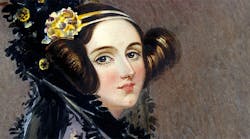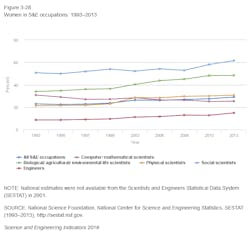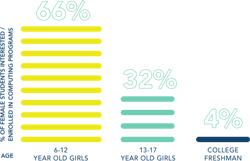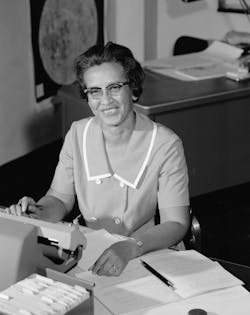The second Tuesday of October is internationally recognized as Ada Lovelace Day (findingada.com), shining light on the contributions of Augusta Ada Byron—better known as Ada Lovelace—in computer science, and recognizing the accomplishments of other influential women and minorities in science, technology, engineering, and math (STEM).
Lovelace is remembered for writing an algorithm at age 17 that was employed on Charles Babbage’s Analytical Engine. The engine was mechanically programmed to generate numbers in the Bernoulli Series. For this accomplishment, she has been named one of the pioneers of modern-day computer science.
Lovelace's interest in math and science started at an early age. Unlike the majority of English women in the Victorian Era, she was encouraged to study these subjects, and was permitted the resources to do so. Support from her mother allowed her to develop a passion for problem solving that she employed throughout her lifetime.
Today, studies from the National Science Foundation (NSF) show that women, blacks, Latinos, and American Indians/Alaska Natives are underrepresented in science and engineering (S&E) fields. An NSF 2016 report shows that only 29% of jobs in S&E were held by women in 2013, with 15% holding engineering jobs, and 25% holding computer and mathematical sciences jobs (see graph below).
Furthermore, after the computer-science workforce nearly doubled in the early 1990s, bringing in significantly more women participants, the number of women in computer-science fields has been declining ever since. A whitepaper from Techbridge cites an NSF paper from 2015 that shows minority women only earn 3% of engineering bachelors degrees, 5% of computer-science bachelor degrees, and 6% of physics bachelor degrees. The NSF describes the disparity of minorities and women in STEM work as "an underutilized source of human capital."
Click to Enlarge. Courtesy of the National Science Foundation.
To address this disparity, there are a wide range of community-outreach initiatives that encourage diversity in STEM—many of which depend on professionals and volunteers to act as mentors, seek funding, and organize events. Others call for knowledgeable individuals to teach math, logic, and problem-solving skills at summer and after-school programs. These efforts are designed to encourage young people by building their knowledge and confidence to face challenges. Clubs, societies, and other groups also are important for young professionals engaging in STEM projects and looking to participate in community outreach.
Google, for example, tackles diversity issues in Silicon Valley with its Code Next program in Oakland, California, to help black and Latino students gain skills to earn jobs at close technology hubs like Silicon Valley. Code Next teaches coding, game development, 3D modeling, and other computer-based skills. Google plans on opening another location for Code Next in Harlem in 2017.
Ada Lovelace. Courtesy of Wikipedia
Ada Lovelace was encouraged from an early age to study math and science to prevent her from becoming like her father, the romantic poet, George Byron. At the age of 17 (year 1832), Lovelace met Charles Babbage, who showed her his plans for creating an Analytical Engine. Impressed by her interests in mathematics and advanced language skills, he asked her to translate a French transcription of one of his lectures. Lovelace got “a little carried away”, adding pages upon pages of notes and ideas to his paper and subsequently writing an algorithm that could be used with the machine to generate numbers in the Bernoulli series. Babbage published these notes along with his paper describing his Analytical Engine, but it wasn’t until more than a century after her death that Lovelace’s notes were recognized as computer software for what would be the world’s first computer.
Katherine Johnson joined the Guidance and Navigation department for the National Advisory Committee for Aeronautics (NACA, which later became NASA) in 1953. She worked as a "computer", continuously performing calculations from data incoming from the black boxes of airplanes. She moved on to become an aerospace technologist and an integral part of the Spacecraft Controls Branch, where she calculated the trajectories of spacecraft and return-flights paths. She was awarded the Presidential Metal of Freedom in 2015 for her contributions to African Americans in STEM. A movie about her accomplishments called Hidden Figures will be released in 2017.




